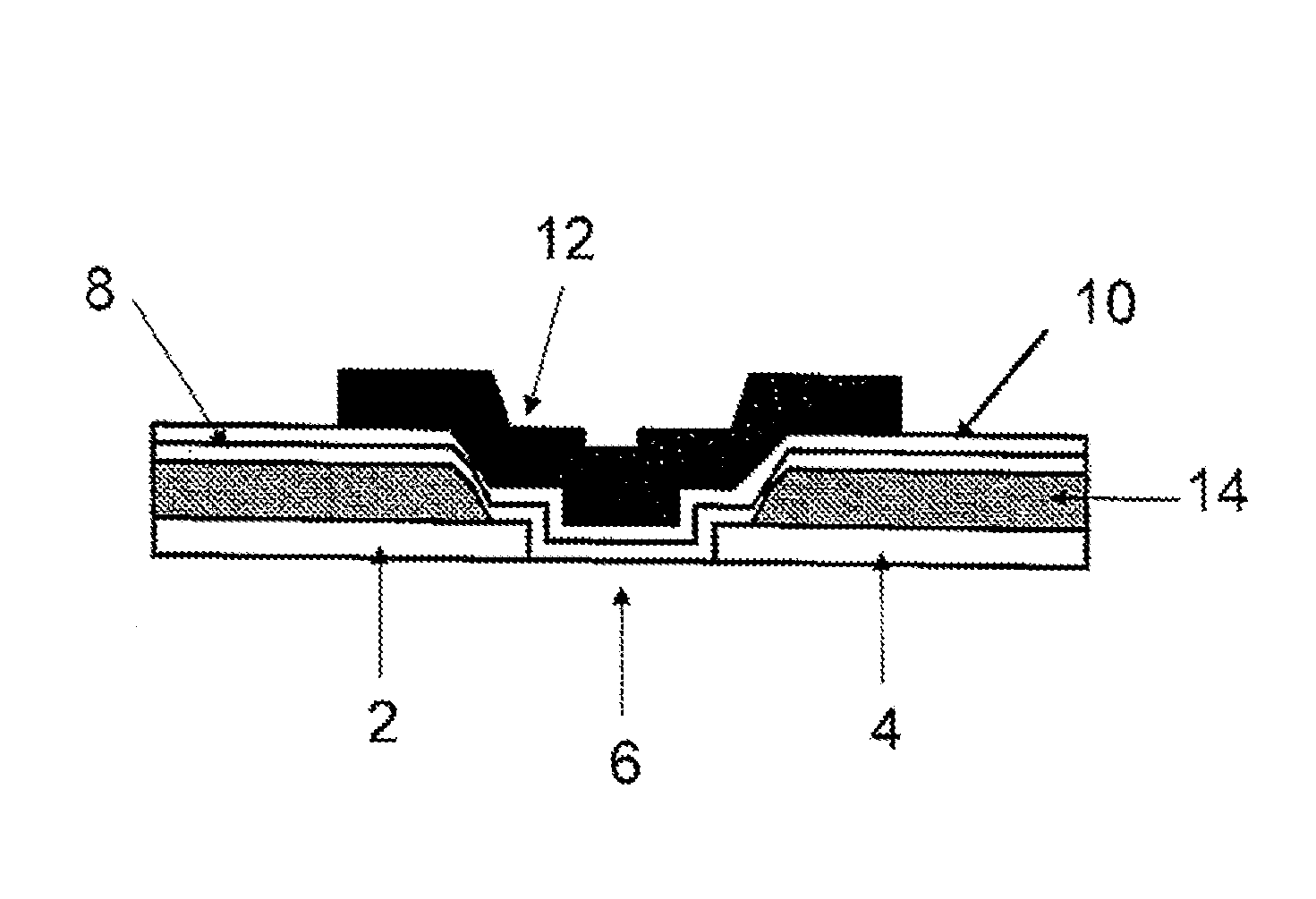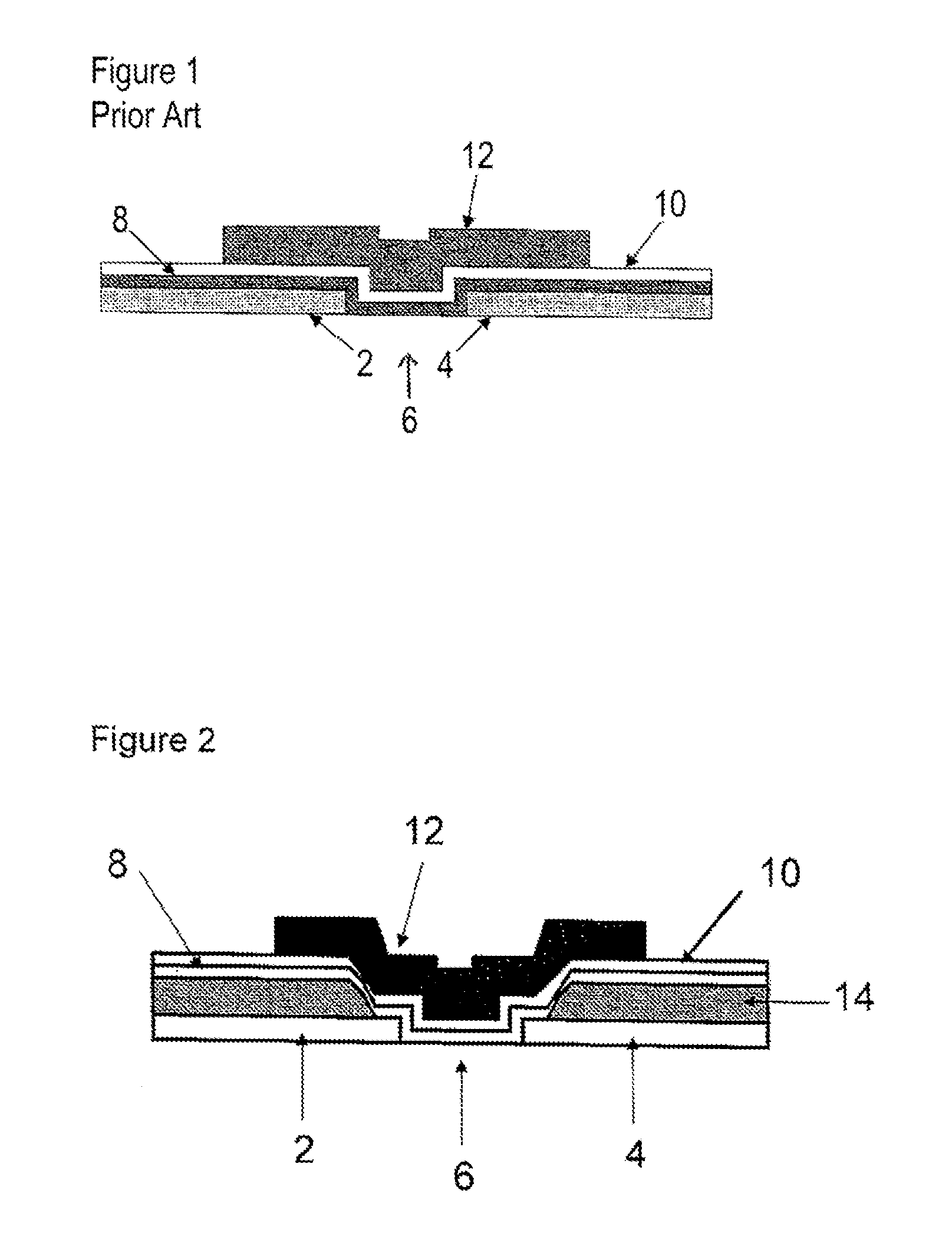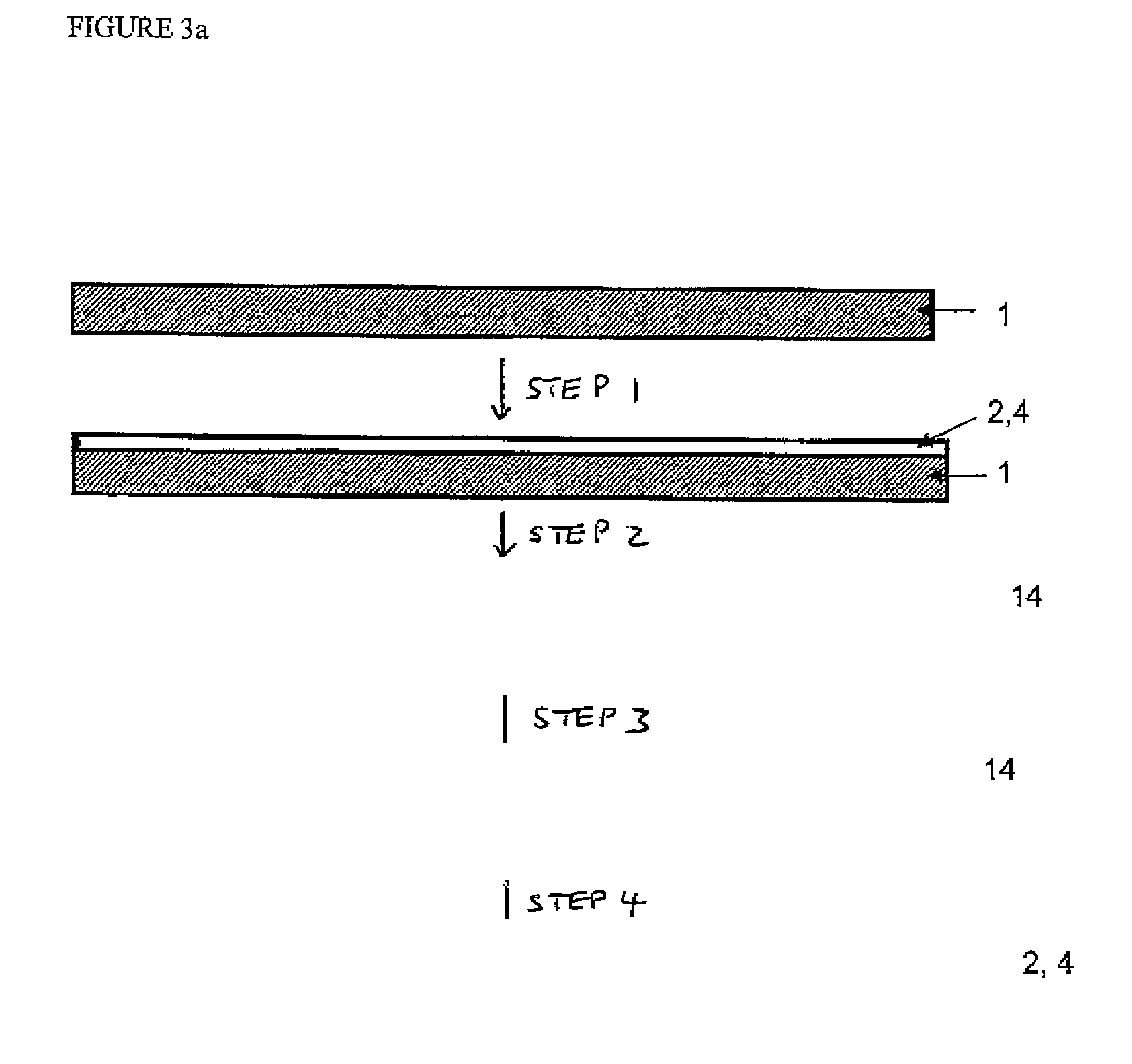Organic thin film transistors
a thin film transistor and organic technology, applied in transistors, electrical devices, semiconductor devices, etc., can solve the problems of parasitic gate capacitance and gate leakage to the source and drain, damage to the organic semi-conductive layer, and a larger voltage required to turn on the transistor, etc., to achieve the effect of minimising parasitic capacitan
- Summary
- Abstract
- Description
- Claims
- Application Information
AI Technical Summary
Benefits of technology
Problems solved by technology
Method used
Image
Examples
Embodiment Construction
[0040]FIG. 2 shows a top-gate organic thin film transistor structure according to an embodiment of the present invention. The transistor is of the insulated gate field-effect type.
[0041]The transistor has a similar structure to that illustrated in FIG. 1 and previously described in the background section. For reasons of clarity, the same reference numerals have been used as in FIG. 1 for common layers. The important difference is that in the arrangement illustrated in FIG. 2, a layer of insulating material 14 is disposed over the source and drain 2, 4 forming a well. This layer isolates the peripheral areas of the overlying gate electrode 12 from the source and drain 2, 4 so as to minimise capacitance and gate leakage to the source and drain. The insulation layer 14 also serves to form a well in which the other layers of the organic thin film transistor can be deposited to enhance alignment.
[0042]FIG. 3a illustrates the method steps involved in forming the organic thin film transist...
PUM
 Login to View More
Login to View More Abstract
Description
Claims
Application Information
 Login to View More
Login to View More - R&D
- Intellectual Property
- Life Sciences
- Materials
- Tech Scout
- Unparalleled Data Quality
- Higher Quality Content
- 60% Fewer Hallucinations
Browse by: Latest US Patents, China's latest patents, Technical Efficacy Thesaurus, Application Domain, Technology Topic, Popular Technical Reports.
© 2025 PatSnap. All rights reserved.Legal|Privacy policy|Modern Slavery Act Transparency Statement|Sitemap|About US| Contact US: help@patsnap.com



